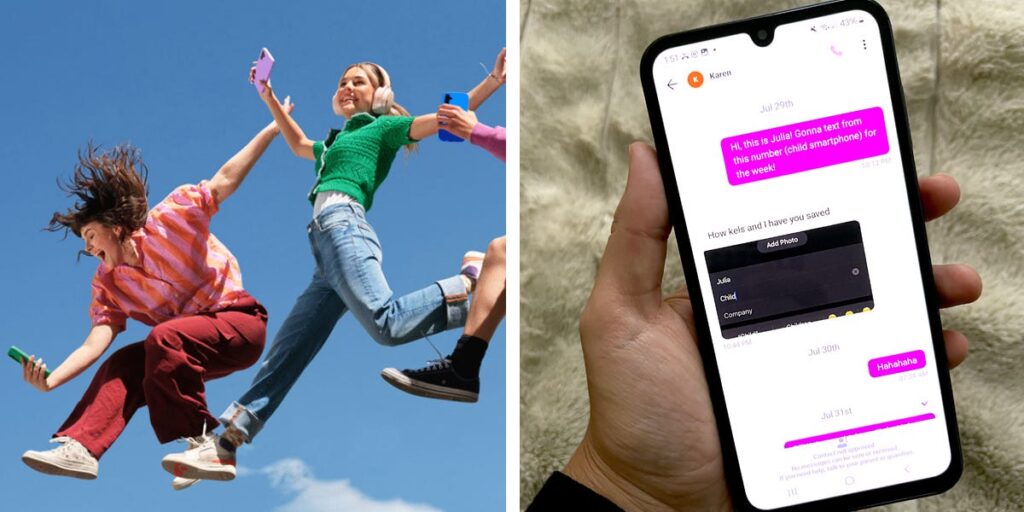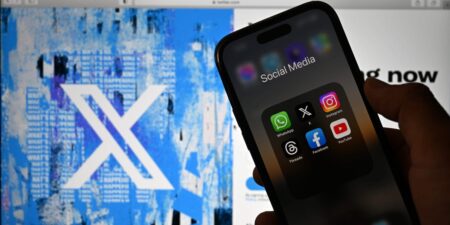As an aspiring parent, I’ve been preemptively worried about all the usual issues, like saving enough money and figuring out the best place to raise kids.
Gen Alpha is poised to be the most online generation, with AI and other inevitable advancements in technology and social media. Knowing all the mental health downsides of smartphones, I feel certain that I should ban my child from both phones and social media for as long as possible. At the same time, I also don’t want my kids to feel left out of friendships and social activities when everyone has an iPhone except them. And I’m still in the deliberating stage — I can’t imagine how tough it is for parents to make these decisions.
Gabb, a company that makes “kid-safe” smartphones and watches, is trying to reach parents who have these same concerns. The idea is that kids and teens have phones that look and function just like the ones their friends have — but don’t have internet, social media, or any apps that could expose them to explicit content or hours of mindless TikTok videos.
Curious to test it myself, I decided to try the Gabb 4 Pro (normally $200, but currently on sale for $50). I wanted to see if a smartphone could simultaneously protect teens without making them feel ostracized by their friends.
I loved the phone, but using it for a week also made me realize how complicated excessive social media use is to solve.
It’s a well-designed phone that doesn’t feel dorky
My favorite phone I ever had was an Android in college over a decade ago. It was much easier to text on than a flip phone, but it was also far less engrossing than the iPhones I’ve had ever since because apps weren’t nearly as sophisticated yet.
The Gabb 4 Pro was exactly like it. I could even customize the text bubble colors.
It took me a little time to adjust as an iPhone user, but much of the interface looked the same. Apps showed up as the same tiny squares, there was a good-quality camera, and I could still use emojis.
I also didn’t find it as limiting as I thought it’d be. The music offerings — on a built-in music platform that looks identical to Spotify — included the radio edits of popular songs like Sabrina Carpenter’s “Please Please Please” (“motherfucker” is replaced with “little sucker”). I also could speak freely over text — I wasn’t blocked from using curse words, for example.
I also loved the app offerings (which have to be downloaded by parents first — see below for more on how that works). I saw familiar brands like Duolingo, Audible, Peloton, and Headspace. There was a plethora of educational, fitness, self-care, and religious apps, plus a few games as well. I also found practical options such as maps, food delivery, and banking apps.
Realistically, a child or teen could navigate directions, manage a savings account, and order dinner on their own with this phone — all without relying on the internet.
It all reminded me of a conversation I had earlier this year with an ex-digital brand strategist about reducing social media use. She emphasized the importance of replacing Instagram scrolling with something else, rather than just taking it away. Gabb’s app offerings leave a lot of room for kids to be entertained in healthy ways, swapping hours of TikTok with reading or language learning.
Parents can monitor dangerous texts
To set up a kid’s phone, parents have to first download two apps onto theirs: MyGabb and GabbMessenger.
MyGabb pairs the parent’s phone with the Gabb 4 Pro, allowing them to track their child’s location and even be alerted when they leave designated “safe zones.”
GabbMessenger goes one step further by notifying parents if their child receives texts from unknown numbers or messages with inappropriate or graphic content. It also has an option for “safe” video calling, where it detects nudity using a smart filtration platform. It then flags and blocks calls from either party.
As a test, I sent some profanities and sexual texts to see what would get flagged. Any time I used the “f*ck” (in any context), my text exchange showed up on the “parent’s” phone.
I support the idea of shielding teens from potential predators or violent pornography, but I didn’t love this aspect of surveillance. Gabb’s own research found that the majority of kids get their first phones in middle and high school — a prime time for rebellion that, at least for every teenager I’ve ever known, has involved cursing, flirting, and some sexual exploration. I think this feature would be great if parents could opt out of being pinged when their teens are just being teens by customizing the filter themselves.
It’s a great step, but parents can’t protect kids on their own
I grew up with phones more rudimentary than the one Gabb offers. I remember a time when I would have to press a key three times to type one letter. It didn’t keep me from struggling with being too online as an adult.
As much as I liked this phone, it was difficult to use it all week. I would start, but then need my real one to answer a work message. I’d see memes from friends who forgot to text my Gabb phone and would get sucked right back into social media.
I think the Gabb phone is a fantastic first one for teens. It gives them everything they need to talk to their friends, be entertained, and independently navigate the world without exposing them to constant social comparisons, bullying, violent porn, and unfiltered garbage.
I also hope more is done to reduce kids’ screen time. I agree with parents who are vigilant about kids’s phone use and who model good phone behavior themselves. On a broader level, I think policies that ban phones in schools are important, too. Even a “dumb” phone can’t protect kids from zoning out in class.
Plus, the only reason I have social media boundaries at all is because I grew up being encouraged to have hobbies. As an adult, I still feel shame when I choose Reddit over reading a book or get too sucked into taking a good photo to enjoy a hike.
Gabb phones can appeal to helicopter parents because of the many monitoring features they offer. It’d be very easy to leave a kid in their room with this phone and the apps it comes with, knowing they’ll be physically safe.
But if anything, teens with location-tracking phones should be nudged to go out into the real world as often as possible. Ultimately, that’s their best protection against an adult life surrounded by screens.
Read the full article here
















